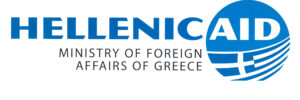The latest Rapid Damage and Needs Assessment (RDNA4), conducted jointly by the Government of Ukraine, the World Bank Group, the European Commission, and the United Nations, was presented by World Bank officials. The assessment estimates that, as of December 31, 2024, Ukraine’s total reconstruction needs amount to €506 billion over the next decade — approximately 2.8 times the country’s estimated nominal GDP for 2024. According to the RDNA4, the largest long-term recovery needs are in housing (€81 billion), transport (€75 billion), energy and extractives (€66 billion), trade and industry (over €62 billion), and agriculture (over €53 billion). Waste removal and management alone are estimated at €12.6 billion.
Direct damages since the start of the full-scale invasion (February 24, 2022 – December 31, 2024) have reached €170 billion, up from €138 billion reported in RDNA3. The sectors most affected are industry, energy, education, and housing. It is estimated that 13% of Ukraine’s housing stock has been destroyed, affecting over 2.5 million households. Energy infrastructure damage increased by 70% in 2024 alone. The regions closest to the frontline (e.g. Donetska, Kharkivska, Luhanska, Zaporizka, Khersonska, Kyivska) account for 72% of total damages.
In 2024, Ukraine allocated over €1 billion from the state budget and donor funds to support housing recovery and undertook emergency repairs on over 2,000 km of roads. For 2025, the government — with donor support — is investing €7.12 billion in priority sectors such as housing, education, health, social protection, energy, transport, water supply, demining, and civil protection. However, a financing gap of €9.62 billion remains. The private sector is playing an increasingly important role in the recovery, contributing to critical needs such as resilient energy solutions (e.g., gas-fired plants, solar panels, biogas). According to IFC estimates, private investment could potentially cover up to one-third of total recovery needs.
To support Ukraine’s recovery, the EU is leveraging its Ukraine Investment Framework and deepening the country’s integration into the Single Market, aiming to mobilize private capital and create new opportunities for both Ukrainian and European businesses.
